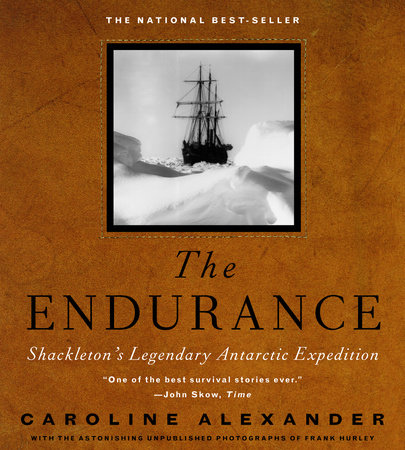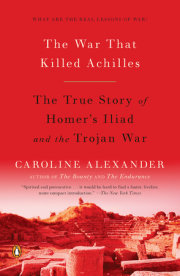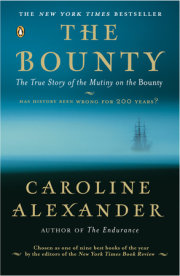The captain of the ship, Frank Worsley, would remember the day vividly ever afterward. It was July, midwinter in Antarctica, and the darkness of the long polar night had been upon them for many weeks. The temperature was -30° Fahrenheit, and around the ship, extending to the horizon in all directions, was a sea of ice, white and mysterious under the clear, hard stars. From time to time, the shriek of the wind outside broke all conversation. Away in the distance, the ice would groan, and Worsley and his two companions would listen to its ominous voice as it travelled to them across the frozen miles. Sometimes, the little ship would quiver and groan in response, her wooden timbers straining as the pressure from millions of tons of ice, set in motion by some faraway disturbance, at last reached her resting place and nipped at her resilient sides. One of the three men spoke.
"She's pretty near her end. . . . The ship can't live in this, Skipper. You had better make up your mind that it is only a matter of time. It may be a few months, and it may be only a question of weeks, or even days . . . but what the ice gets, the ice keeps."
The year was 1915. The speaker was Sir Ernest Shackleton, one of the most renowned polar explorers of his day, and the third man was Frank Wild, his second-in-command. Their ship,
Endurance, was trapped at latitude 74° south, deep in the frozen waters of Antarctica's Weddell Sea. Shackleton had been intent on an ambitious mission: He and his men had travelled to the south to claim one of the last remaining prizes in exploration, the crossing on foot of the Antarctic continent.
Since December 1914, the
Endurance had battled unusually heavy ice conditions, travelling more than 1,000 miles from the remote whaling stations on the island of South Georgia, at the gateway to the Antarctic Circle. One hundred miles short of her intended harbor, new ice conditions brought the
Endurance to a halt. A northeast gale blowing on and off for six straight days compressed the pack against the Antarctic ice shelf, trapping the ship fast within it. Days later, the temperature plummeted to 9°, as good as cementing the loose pack for the winter. Meanwhile, the leisurely, unrelenting northerly drift of the Weddell Sea carried the
Endurance within the pack farther and farther from the land it had come so close to reaching.
When Shackleton embarked upon his Imperial Trans-Antarctic Expedition, he was already a national hero with two polar expeditions behind him, including one that had taken him to within 100 miles of the South Pole, the farthest south anyone had travelled at that time. Yet for all the heroism of these earlier efforts, neither had accomplished what it had set out to do. By the time Shackleton headed south again in 1914, the prize of the South Pole, which he had twice sought, had been claimed by others. Undaunted, he had turned his sights upon a last great venture--the crossing of the Antarctic continent from the Weddell to the Ross Sea. The preparations for the
Endurance expedition had been all-consuming; not the least of Shackleton's tasks had been raising the funds to make it possible. He was forty years of age, and he had summoned all his experience as explorer and organizer to bear on this ambitious undertaking. Shackleton could not yet know it, but the trans-Antarctic expedition would amount to another unsuccessful venture. Yet ultimately it would be for this, the failed
Endurance expedition, that he would be most remembered.
Antarctic exploration of the early twentieth century was unlike exploration of anywhere else on earth. No dangerous beasts or savage natives barred the pioneering explorer's way. Here, with wind speeds up to nearly 200 miles an hour and temperatures as extreme as -100° Fahrenheit, the essential competitions were pure and uncomplicated, being between man and the unfettered force of raw Nature, and man and the limits of his own endurance. Antarctica was also unique in being a place that was genuinely discovered by its explorers. No indigenous peoples had been living there all along, and the men who set foot on the continent during this age could authentically claim to have been where no member of humankind had ever cast a shadow.
Beginning in 1914 and ending in 1917, straddling the First World War, the
Endurance expedition is often said to have been the last in the Heroic Age of polar exploration. The significance and ambition of Shackleton's proposed trans-Antarctic crossing is best appreciated within a context of the ordeals of heroism--and egotism--that had played out before. Indeed, Shackleton's greatness as a leader on the
Endurance owes much to the sometimes insane suffering of his earlier Antarctic experiences.
The Heroic Age began when the ship
Discovery, under the command of Captain Robert Falcon Scott, set out for Antarctica's McMurdo Sound in August 1901. Despite public talk of scientific advancement, the real objective of this first inland expedition, as of subsequent ones, was to reach the as yet unclaimed South Pole and win it for Britain. Scott chose two men to accompany him on this first bid for the pole--Dr. Edward Wilson, a physician, zoologist, and close friend; and Lieutenant Ernest Shackleton, a twenty-eight-year-old merchant service officer, whose commissions had taken him to Africa and the East. On November 2, the three men set out with nineteen sledging dogs and five loaded sledges. They faced an unspeakably daunting challenge, a round-trip journey of more than 1,600 miles, hard sledging all the way, through an entirely unknown and uncharted environment.
By day, the three man-hauled their loads with or without the aid of the dogs, ferrying their supplies in time-consuming relays. By night they meticulously divided their meager food into three equal portions and read Darwin to one another before retiring to their frozen sleeping bags. They starved, they suffered from scurvy. The dogs sickened and dropped, and were butchered to feed the survivors. Scott pushed his band on to 82°17’ south, 745 miles north of the pole, before acknowledging their desperate situation and reluctantly giving the order to turn back. By this time, Shackleton was spitting blood, undone by scurvy, and sometimes had to be carried on the sledge. On February 3, 1903, three months after setting out, they arrived back at their ship. The last leg of this terrible journey had been a race for their very lives.
This first Antarctic trek established the pattern of heroic suffering that would characterize subsequent British expeditions. Yet even a casual perusal of the explorers' diaries suggests this suffering was unnecessary. Less than three weeks into their journey Wilson notes: "Dogs getting very tired and very slow (19 November). . . . The dogs made terribly heavy weather of it today, and the dog driving has become the most exasperating work (21 November). . . . Dogs very weary indeed and terribly slack and the driving of them has become a perfectly beastly business (24 November)." Day after day, one follows the downward spiral of these wretched, exhausted animals. It is unpleasant reading.
Scott's own diary sounds more alarms: "On the whole our ski so far have been of little value. . . . [T]he dogs, which have now become only a hindrance, were hitched on behind the sledges," Scott wrote on January 6, 1903. The following day he notes that they "dropped all the dogs out of the traces and pulled steadily ourselves for seven hours, covering ten good miles by sledge-meter. . . . [T]he animals walked pretty steadily alongside the sledges." It is a stunningly improbable image: Three men walking across Antarctica at about a mile an hour with their skis securely strapped to the sledges, accompanied by a pack of dogs. Scott and his companions had not taken the time to become proficient on skis, nor did they have any knowledge of driving dogs. Their prodigious difficulties, therefore, were the result of almost inconceivable incompetence, not necessity. And the men were starving--not because unforeseen disaster had taken their supplies, but because they had not rationed sufficient food. Shackleton, the biggest of the men, suffered the most because he required more fuel than did the others.
And they had quarrelled. Scott and Shackleton could not have been temperamentally more dissimilar and had virtually no rapport. As a product of the navy, Scott established a rigid order predicated upon rank and rules; on the
Discovery, in the middle of the Antarctic, he put a man in irons for disobedience. Shackleton, an Anglo-Irishman from the ranks of the merchant marine, was charismatic, mixing easily with both crew and officers. He had been chosen to accompany Scott on account of his physical strength. The long days of white silence, the unrelenting tedium and hardship, the unrelieved close quarters--all these factors must have shredded the men's nerves. Wilson appears to have been forced to act as peacemaker on more than one occasion. Years later, Scott's second-in-command told the story that after breakfast one day Scott had called to the other men, "Come here, you bloody fools." Wilson asked if he was speaking to him, and Scott replied no. "Then it must have been me," said Shackleton. "Right, you're the worst bloody fool of the lot, and every time you dare to speak to me like that, you'll get it back." It is a surreal encounter, a piece of absurd theater--three men alone at the ends of the earth in a virtual whiteout, hissing at one another.
On their return to the
Discovery, Scott invalided Shackleton home. Though mortified by his early return to England, Shackleton arrived home as a hero who had gone farther south than anyone before. And as the lone available authority on the expedition, he received more attention than would otherwise have been the case. This recognition, he must have known, would prove valuable should he one day wish to stage his own expedition. In any case, he would never again submit to the leadership of another man.
. All rights reserved. No part of this excerpt may be reproduced or reprinted without permission in writing from the publisher.









